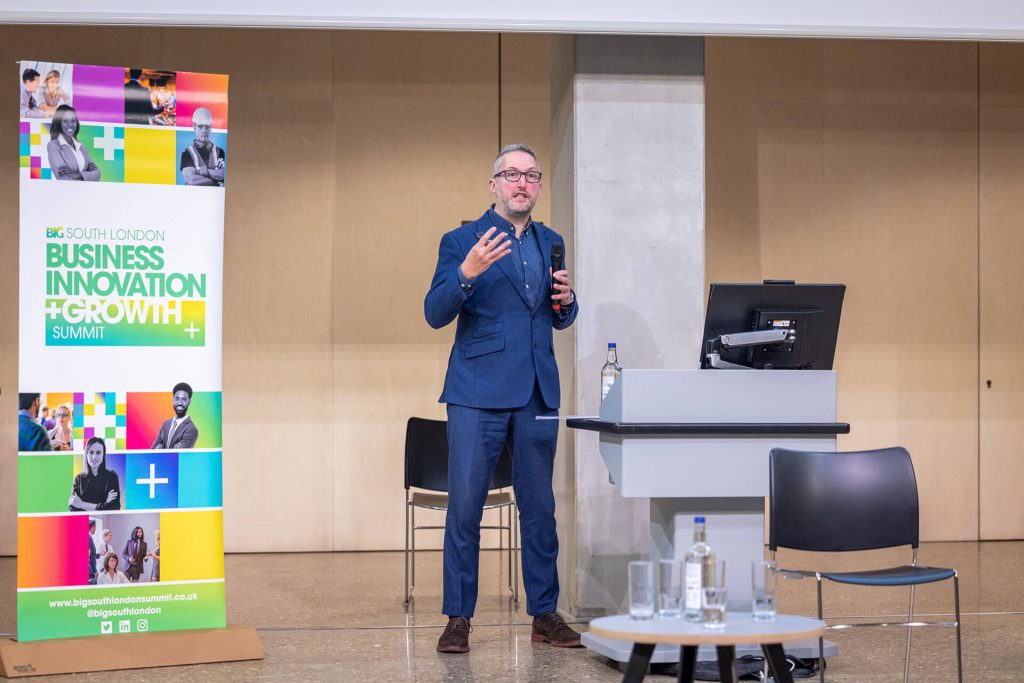South London’s Innovation Clusters
Speaker:
New analysis, commissioned by BIG and the London Borough of Richmond upon Thames, looked at the economies of the South London Partnership (SLP) boroughs – Croydon, Kingston upon Thames, Merton, Richmond upon Thames and Sutton – and the sector clusters within them.
Will Cookson, Director for Communities and Government, Lightcast, presented the findings in a keynote speech, he said: “It’s all a work in progress but we’ve brought an evidence base to inform some of the priorities that need to be made.”
He spotlighted the partnership’s general strengths – passenger transport, civil engineering, creative and professional services – as well as those for specific boroughs with Croydon having a ‘location quotient’ of three times the national average for passenger transport. Richmond’s strengths lay in creatives, health and care, Kingston’s in retail and Sutton’s in travel.
Four high-potential clusters across South London were singled out for a deep dive, with a cluster defined as “a group of specialised industries, which are linked by how they locate the skills that they require in order to prosper and also their interactions with other supply chains”.
They include a health cluster which Mr Cookson said was “the most developed cluster of the four,” adding: “It’s really labour intensive and creates a high volume of jobs for the area. The main challenge is around workforce recruitment and skills, which is probably not hugely surprising.”
The life sciences cluster is the “least developed” but “one of the biggest opportunities for the area” with Richmond and Kingston standing strongest to “turn this cluster into an opportunity for the overall area with collaboration and partnership”.
“The creative cluster has really huge potential as a strength for the area, particularly in relation to advertising and market research, with concentrations in Wandsworth, Richmond and Merton,” Mr Cookson said. “Opportunities for collaboration have been identified with Southwark and Lambeth businesses.”
Regarding construction, he added, “there’s a particular strength across the geography in terms of civil engineering and a wide range of activities, which makes it harder in some ways to coordinate and find that common theme”.



